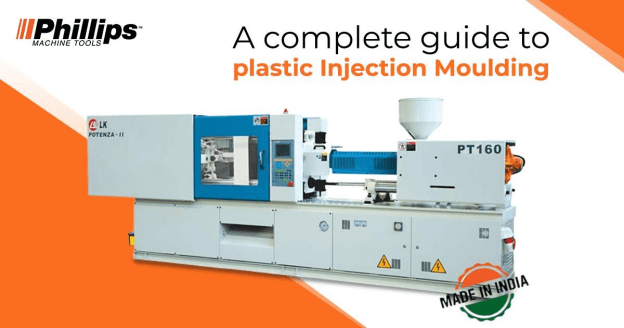Phillips Corp: A complete guide to plastic Injection Moulding
Injection moulding turns molten plastic into the shape of the desired product using custom made tools with a selection of machines. Injection moulding is used to make products like chairs, musical instruments, automotive parts, toys, parts for electrical appliances, preform for bottles, tables and other similar products. Using injection moulding the products are usually created in bulk, as it is well known for successful mass production.
How was injection moulding invented?
During the mid – 1800s the use of ivory was replaced by plastics and plastic injection moulding was introduced. The plastic was heated in a large heating barrel, and then a plunger was injected into the melted plastic into the mould. Plunger systems/mechanisms of injecting plastics were replaced by reciprocating screws in the 1950s which helped in even distribution of heat, mixing of material. Auxiliary heaters were used and the screw supplied mechanical energy which together help these plastic (or other materials) granual form to melt and homogenise.
Presently there are a plethora of injection moulding machines that can be customised for the mass production of objects. New injection moulding machines can not only mould plastics but also biodegradable products, which promotes environmental conservation.
Functional units of injection moulding machine
1. The injection unit
The injection unit is the primary part of the entry point for the material that needs to be melted and moulded. The barrel is located in the middle with the hopper on one end and a mould cavity on the other.
The Hopper – Dried plastic or the material to be moulded is placed into the hopper, which also contains a drier to ensure that moisture stays away from the material inside it. A hopper is located at the end of the barrel. The material inside the hopper is mixed with the required compounds like strengthening and colouring substances.
The Screw & Barrel – The material now passes to the barrel from the hopper where it is completely melted by a heater that is provided on the barrel. A rotating screw allows a path for the material while heating and act as a hydraulic ram (pump powdered by hydropower) pushes the heated material into a mould.
2. The Mould Cavity
The material then passes through a runner system and enters the mould cavity which is located on the other end of the barrel. In the mould cavity, the melted material will fill the cavity completely, cool down, solidify and hence adapt the shape of the mould. The solid material is then ejected from the mould cavity, is placed on a conveyer belt and then moves to a storage container. After this process the final product is ready to be used, no other modification is required in most cases.
The time taken for the above process depends on the size, shape of the mould cavity, nature of the machine and the plastic raw material that requires it to be moulded. The process is repeated automatically. The more advanced the machine is, the faster and efficient it will be.
Manufacturing of the mould cavity
Because the shape of the final product will be identical to the mould cavity, it requires a change of shape and size in accordance with the product. The mould cavity also needs to maintain structural integrity despite the amount of heat it is subjected to, hence the mould cavity is made from aluminium or steel through CNC machining.
Custom Injection Moulding
If the product that needs to be moulded through injection moulding is different from the usual products, then the machine manufacturers require custom injection moulding. It is usually required to create military and medical products. Custom Injection moulding is very different from general injection moulding and requires specialised designers and engineers.
Injection moulding produces high volumes of high quality, good looking and cost-effective products. It is highly used to produce automotive parts (materials like polypropylene and PVC) toys, bottle caps (using Polypropylene(PP)), models of aeroplanes (using Polystyrene (PS)), consumer electronic products (using Polystyrene (PS)) and bio-friendly medical equipment.
This content was originally published on the Phillips Corp website.

